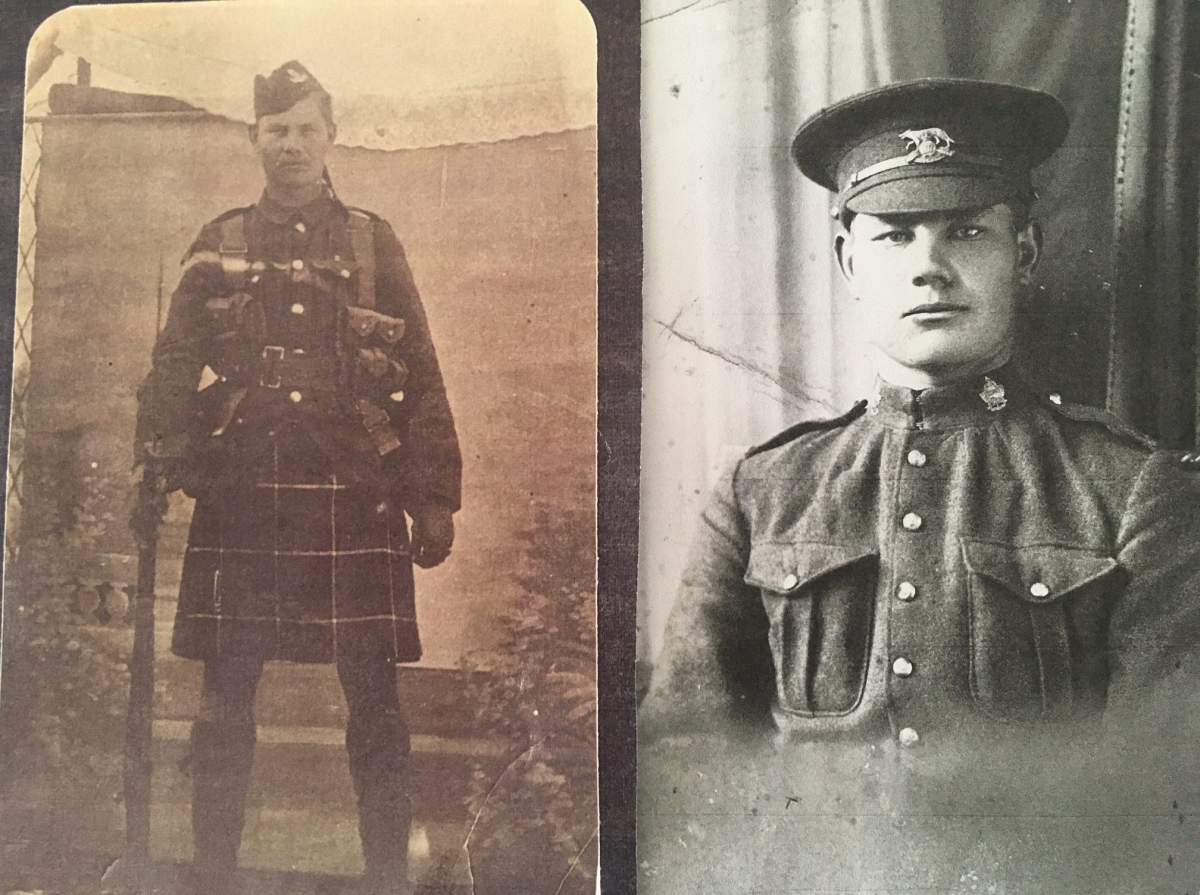More than 100 years ago, Private Reginald Joseph Winfield Johnston went missing after leaving his Manitoba town to go serve in the First World War. He never returned and his family presumed he went missing in action and died.

In 2011, human remains were found by a construction company excavating for an expansion of a shopping mall in the village of Vendin-le-Vieil, France. The remains were connected to the First World War so the Commonwealth War Graves Commission (CWGC) was notified, and the organization took possession of the remains and artifacts.
READ MORE: Human remains found in France solve 100 year mystery for Manitoba family
After extensive DNA analysis, the remains were later identified as those of Private Johnston, who was a member of the 16th Battalion, Canadian Expeditionary Force. Among the artefacts recovered from the construction side was a button from the 16th Battalion.
Johnston was born in Springfield, Man., on August 10, 1895. He grew up in Fairford Man., and enlisted in Winnipeg on January 19, 1916, at 20-years-old. He was killed on August 15 or 16 in 1917, in the Battle of Hill 70. He was 22.
There were 39 soldiers from the 16th Battalion who were reported missing during the battle and presumed dead, whose remains had no known grave.

Get breaking National news
RELATED: Winnipeg soldier captured during Second World War battle shares story
However, DNA evidence was able to unlock the mystery surrounding his death and give his family closure.
Unravelling the mystery
Sarah Lockyer is a forensic anthropologist who worked on uncovering the mysterious remains.
She said identifying the remains was not an easy task, as there were many bodies found in the vicinity. It took four years to find out the identification, which included using a DNA swab from an 80-year-old Manitoba woman, who Lockyer believed to be a relative.
“First we analyzed the remains…we then laid them out anatomically and took the skeletal inventory to see which bones are available and whether or not they are damaged,” she explained.
RELATED: Remains of Canadian soldier missing since 1944 identified in Belgium
The team then looked at the age, stature, ancestry and any illnesses found. Afterwards they created an age and height range, which is available on the soldier’s paperwork they filled out went entering the army. Through this, the team eliminated candidates who were too short, too tall, too old or too young, Lockyer said.
The next step involved finding a DNA donor from mitochondrial DNA, which is passed from mother to child. This is different than DNA in the nucleus, which comes from both parents.
WATCH: Family member talks about discovering the news about her uncle

“The mitochondrial DNA has a high survival rate in sets of remains. The paternal DNA is less likely to survive,” Lockyer said.
The team needed to find a woman related to Johnston and take her DNA. They tracked down a potential family member, Lorraine Leniuk, who lives in Petersfield, Man.
They took a swab from her mouth and matched the DNA to a portion of the soldier’s foot bone.
RELATED: Remains of Second World War soldier from Sask. identified in Europe
The results showed “it was more likely than not that the DNA donor and the set of remains were from the same maternal line,” Lockye said.
There was a 99.82 per cent inclusion probability that Leniuk and Private Johnston were from the same familial line.
A final burial
Lockyer will be meeting Private Johnston’s family, including Leniuk in August for a proper memorial in France.
She said she’s happy she was to help the family find closure on the 100-year-old mystery.
“It’s all about returning their identity,” she said. “For these soldiers who give their lives for our country, they remain nameless and missing. To be able to return their identity and their names, means something to us.”
- ‘A normal thing now’: Canadian family says extortion gang is preying on them
- Winter storms, rain and snow walloping Canada. Here’s where you’ll see it
- ‘Really challenging issue’: Many B.C. communities still at high risk for flooding
- Cold warnings across the Prairies forecast wind-chill temperatures near -45 C









Comments